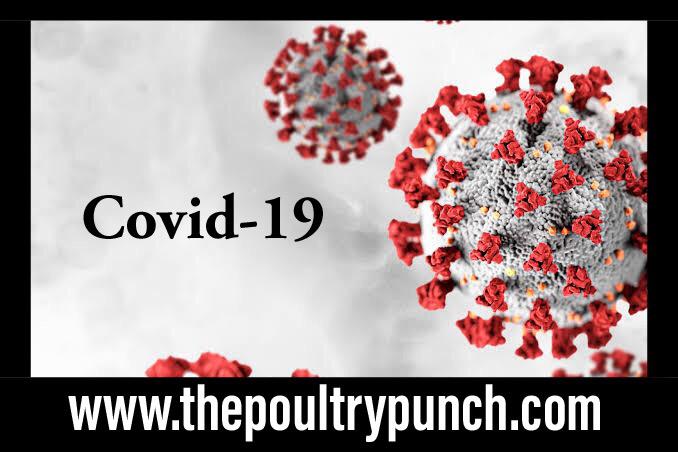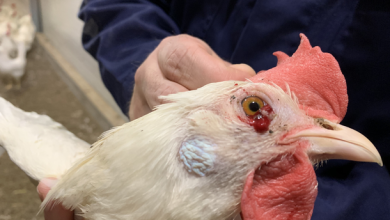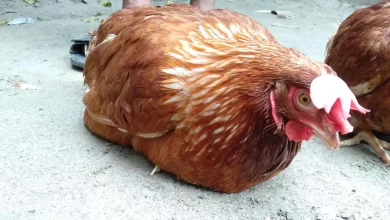Navigation of Hatcheries in COVID-19 Pandemic

Zulfqarul Haq1, Azmat Alam Khan1 and Nazir Ahmed2
1ICAR-Poultry Seed Project, Division of Livestock Production and Management, SKUAST-K,2Directorate of Extension Shalimar, SKUAST-K

Corona virus and poultry
For poultry great attention has been given to restrict avian infectious bronchitis virus (IB), which is part of the genus Gamma corona virus and not transmitted to humans. Given that SARS-CoV and COVID-19 are from the same genus and use the same angiotensin-converting enzyme 2 (ACE2) host cell receptor, SARS-CoV does not infect or cause disease in poultry. This fact suggests that poultry is unlikely to disseminate or serve a reservoir for these viruses. IBV induces an acute, highly contagious infectious disease of chickens. IBV is globally distributed and responsible for huge economic losses in the poultry industry. The infection is mostly accompanied by a reduction in the growth rate and a drop in egg quality and quantity.
The similarity in the genetic make-up of humans and chickens is about 60%, the immune system of humans and avian species is very different, and thus vaccinations protocol, types, and applications are different. The production of human vaccines is essential to save lives and ensure the wellbeing and, hence, much more important than the production of a vaccine for farm animals. Poultry production does not seem to be at risk due to the global spread of SARS-CoV. Nonetheless, increasing biosecurity and hygienic measurements at the farm become apparently vital and need further efforts to limit the spread of SARS-CoV to the poultry industry and its possible mutation. However, very limited research has been performed with the COVID-19 virus in poultry.
Importance of Disease Diagnosis in pandemic
The diagnosis and treatment of poultry diseases are the most common tools to control and prevent disease transmission and spread. The most recent example is avian influenza, where early diagnosis of the source and route of virus spread helped to control the disease and develop an effective vaccine for this zoonotic disease. Furthermore, vaccines developed for IBD and IBV, and early for Newcastle disease virus (NDV) and coccidiosis, have helped to save billions of dollars to the industry, as well as improve industry safety and protect it from disease outbreaks. A major lesson from the COVID-19 pandemic is that world health is one unit. Thus, developing fast, accurate, and affordable diagenetic tools/kits that can be used on farms is absolutely necessary, and research in this area should be initiated and given maximum funding and impetus.
Challenges for Hatcheries in COVID-19
Although circumstances differ from hatchery to hatchery and from country to country, hatcheries are facing labour-related issues and supply chain challenges. While poultry farms and hatcheries continue to operate, more people are staying home as countries try to ‘flatten the curve’ and measures are implemented to reduce transmission of the virus. There is also no denying that market conditions are in flux: restaurants and markets are being closed down, air transport has been disrupted, country borders are closing. All these may have a knock-on effect on how long hatching eggs need to be stored and on the transport times for day-old chicks. No matter how automated a hatchery is, its operation remains heavily dependent on personnel. And hatchery work is teamwork, involving close proximity, with the risk that someone who is infected will pass the virus on to their colleagues. It is crucial that you instruct your personnel to stay home if they (or someone else in their household) show even the mildest flu symptoms like a runny nose, coughing or low fever. Even if they only have ‘regular’ flu, it’s better to be safe than sorry.
Important steps to be followed by hatchery workers in COVID-19
Hatcheries already operate at the highest levels of biosecurity to protect the birds from harmful pathogens, extra preventive actions are required to safeguard workers in these unprecedented times. The following points form the basis of best-practice hygiene to protect hatchery workers.
• The hatchery manager should be aware of and communicate the latest local restrictions and advice to team members. The best way is to create social media groups and keep all members informed.
• All visits by non-hatchery personnel should be prohibited.
• Anyone who is not feeling well and has symptoms similar to Covid-19 should immediately seek medical attention and inform the hatchery manager. See the World Health Organisation web site for a full list of symptoms.
• Normal hygiene practices should be heightened through frequent hand washing.
• It is essential to regularly sanitize all commonly touched surfaces.
• Signs should be placed around the hatchery and at every hand-wash station to remind everyone to follow recommended hygiene practices.
• Showers should be disinfected with antiviral and antibacterial disinfectants between uses.
• Signs advising users to wipe down the shower and door handles should be clearly visible.
• Employees should be provided with new face masks at the beginning of each shift (whenever required) and wear them at all times.
• Toilets, including door handles, should be cleaned at more frequent intervals using antiviral and antibacterial disinfectants. Special hand-sanitizing door handles (and even self-disinfecting push door panels) are very useful.
• Supplies arriving at the hatchery should be treated with the greatest care, as they may have passed through many hands and have come from different locations. Disinfecting all goods by fumigation, UV light or disinfecting spray is essential.
• If chickens are being dispatched in plastic boxes to the farms, the boxes must be disinfected before they are brought back into the hatchery. Ideally, they should be washed and disinfected off-site. An alternative would be to deliver birds to customers in cardboard boxes for the duration of the pandemic.
• And most important of all: keep 1.5–2 meter distance. Enforce this rule as strictly as possible. Where this is impossible, for example at the chick grading belt, issue your personnel with face masks. One option for creating distancing could be to work with fewer people at once (which will mean longer operating hours or working in shifts). Avoid overcrowding in the canteen; let people take their break in shifts. Needless to say, you should only allow essential staff into the hatchery.
Effective social distancing procedures
The World Health Organisation has identified social distancing as the best defence against Covid-19. Here are some helpful tips:
• Local governmental social distancing guidelines should be respected.
• It is good practice to alternate break times to prevent the break room from becoming overcrowded.
• If chairs are fixed to the ground, signs should indicate that chairs too close to each other cannot be used.
• Chairs and any handles in the break room should be cleaned and disinfected between each group on a regular basis.
• Sexers should keep their distance from each other at all times. This can be achieved by spreading the sexer stations further away from each other, or by installing barriers between the stations.
• Because hatchery delivery drivers are exposed to external unknown sources more frequently, it is essential they adhere to the social distancing policy and do not enter the hatchery. They should wear masks, gloves and disposable coveralls.
Protecting people and the supply chain
It is important to know that chickens cannot be infected by Covid-19, and they also cannot transfer it to humans. This fact needs to be communicated to all hatchery staff to avoid misinformation and potential panic. Having additional, well-communicated precautions in place is necessary not only for health and security reasons, but also to reassure all employees that they are important, and that every step possible is being taken to keep them and their families safe. These added measures protect people – our most valuable resource. And, they also help maintain continuity of chick supply to poultry producers.
Prolonged transit time of day-old chicks
As selling day-old chicks becomes more difficult, the chicks may have to stay a day longer in the hatchery. Some customers have also mentioned that transport time is being prolonged due to roadblocks and especially at border crossings. Chicks can go without food and water for up to 3 days, and their residual yolk sac provides enough nutrients. As long as they are kept comfortable, the chicks will stay quiet and not use much energy. The greatest risk is dehydration. Chicks have only limited water reserves. Under optimal conditions chicks will breathe through their nostrils and lose little water, but when the conditions become too warm, they will start panting with their beaks open in an attempt to prevent their body temperature from rising. Keeping the chicks’ environment comfortable is the most effective way to avoid dehydration. If waiting times are likely to be longer than normal, you could inject newly hatched chicks with 1cc saline solution. Or provide them with water-containing feed. There are special gels and feeds available, but citrus fruit, watermelon, and boiled rice work well too. And don’t forget that, just as important as overheating, chicks mustn’t become chilled during extended storage.
Conclusion
It is vital that you ensure all your staff is following all the rules issued by the local health authorities to prevent transmission of the virus. One can minimize the effects of prolonged egg storage by improving storage conditions and carrying out heat treatment. After they have hatched, keep chicks as comfortable as possible, while avoiding overheating, dehydration and chilling. If delivery is delayed, make sure to give the chicks water-containing feed.


